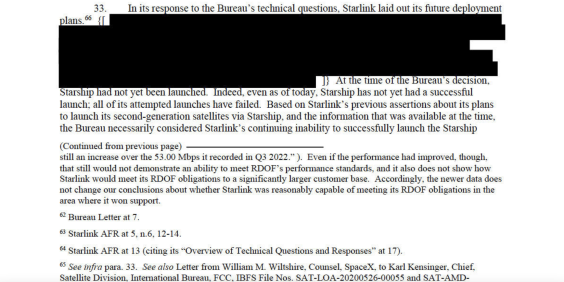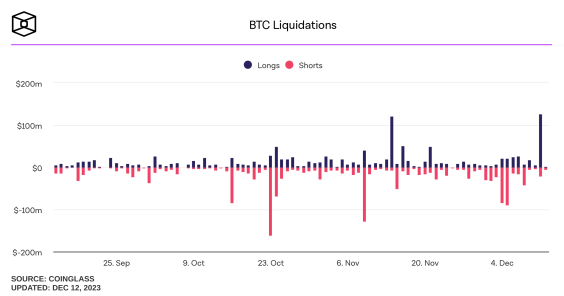This is not investment advice. The author has no position in any of the stocks mentioned. Wccftech.com has a disclosure and ethics policy.
A lot of pundits expect the US economy to tip into a recession later this year in light of the Federal Reserve’s incessant interest hike campaign, compounded by the tightening of the lending standards following a series of troubling bank failures. Elon Musk has not only thrown his weight behind this thesis but has also gone a step further by predicting that the US economy is already in a “mild recession.” While the jury is still out on the current economic momentum in the world’s largest economy, Tesla’s demand woes certainly suggest troubling undercurrents.
Fed data has too much latency. Mild recession is already here.
It’s not like just the canary in the coal mine (SVB) died, one of the staunchest miners (Credit Suisse) died too & the cemetery is filling up fast!
Further rate hikes will trigger severe recession. Mark my words.
— Elon Musk (@elonmusk) April 30, 2023
On Sunday, Elon Musk took to Twitter to declare that further interest rate hikes by the Federal Reserve would trigger a “severe recession.” But it seems that no one was listening to his advice in the Eccles Building, as the Fed raised its benchmark interest rate by an expected 25 basis points this week.
Of course, the overall demand weakness is just one aspect of the challenge that Tesla is facing at the moment, with the EV giant’s rumored refresh of the Model 3 and the attendant muted demand for the current version, as well as its confounding pricing strategy continuing to act as stimulants for further demand softness.
Tesla cut the prices of its EVs by an average of between 12 and 15 percent during the first quarter of 2023. These price cuts, however, provided only diminishing returns, with Tesla’s sequential deliveries managing to grow by only 6 percent and sequential automotive revenue falling by around 7 percent.
What’s more, Tesla’s CFO had stated toward the start of the year that the EV giant’s automotive gross margin would remain above the 20 percent level in Q1. However, the actual gross margin (ex-regulatory credits and leases) computed at 18.3 percent.
At the company’s latest earnings call, Elon Musk stated that Tesla could afford to sell its EVs at minimal margins in the short run, banking on the Full Self-Driving (FSD) capability of its Autopilot ADAS to drive recurring revenue stream and higher margins in the long run.
Steve Wozniak on AI and $TSLA pic.twitter.com/nXDaUvyU8E
— Mementium (@Mementium) May 3, 2023
This planned trajectory, however, remains questionable. For instance, Apple’s co-founder Steve Wozniak recently made waves when he declared that “if you want a study of AI gone wrong and taking a lot of claims and trying to kill you every chance it can, get a Tesla.”
Tesla’s Pricing Strategy: A Bucketload of Discounts Followed by Token Price Increases
Back in 2022, the general perception was that Tesla was supply-constraint and that it would be able to sell as many EVs as it could manage to produce. However, as the global economy started experiencing a slowdown in momentum, the demand for Tesla EVs started to soften. To counter this, the company embarked on a campaign of aggressive price cuts. This, though, created a perverse incentive for consumers to withhold their purchasing decisions. After all, why should a prospective buyer purchase a Tesla EV today when it can be bought for a significantly lower price tomorrow? Concurrently, the buyers who did purchase their EVs at a higher price felt cheated. These two factors have created a perfect storm for Tesla’s brand image.
Perhaps recognizing the blind alley in which Tesla was entrapping itself, the company has been implementing token price increases to signal to consumers that the era of perpetual discounts is over. For instance, the company recently raised the price of the Model 3 and Model Y in the US by a nominal $250 in the US.
$TSLA hiked import prices of M-S and M-X in China by +2.4% and +2.2% respectively (approx $2,750). Following last week’s modest $290 price increases on M-3/Y, we believe $TSLA mgmt is signaling to China consumers to order now rather than wait for further price cuts.
— Gary Black (@garyblack00) May 5, 2023
The company has also resumed orders for the Long-Range (LR) version of the Model 3 All-Wheel Drive (AWD) at an attractive price point in the US.
$TSLA hiked import prices of M-S and M-X in China by +2.4% and +2.2% respectively (approx $2,750). Following last week’s modest $290 price increases on M-3/Y, we believe $TSLA mgmt is signaling to China consumers to order now rather than wait for further price cuts.
— Gary Black (@garyblack00) May 5, 2023
Today, Tesla raised the price of its premium Model S and Model X by 2.4 percent and 2.2 percent, respectively, in China. While it is too soon to judge the impact of this strategy on Tesla’s fundamentals, the trend does not appear to be very encouraging.
Porsche outsold Tesla in Germany in April. Tesla had ~60-70k supply in April.
Will update my sheet in an hour.$TSLA
— fly4dat (@fly4dat) May 4, 2023
Consider the fact that Porsche outsold Tesla in Germany in April 2023.
The EU market is critical for $TSLA this year. It supports:
-185K of annual imports from Shanghai
-400K of annual output in Berlin
This means $TSLA must sell 48,750 cars/month. April YTD avg monthly sales are only 26,789.$TSLA is operating at 55% of capacity in the EU.
— Motorhead (@BradMunchen) May 4, 2023
The EU market is a critical battleground for Tesla as it serves to absorb 185,000 units of annual production capacity of Giga Shanghai and 400,000 units of the annual output from Giga Berlin.
$TSLA wholesale (domestic + export) China volumes in April = 75,842. NOT SO GOOD.
Only 6% higher than 71,704 at the start of Q3 2022, when prices were 17% *higher* than now.
Domestic vs export breakdown not out yet, but if domestic was weak & exports were strong: negative.
— Motorhead (@BradMunchen) May 5, 2023
On the China front, the CPCA just reported that Tesla’s wholesale (domestic plus export) delivery volume computed at 75,842 units for the month of April, corresponding to an increase of just 6 percent relative to the comparable period in 2022, when the ASP for Tesla EVs was around 17 percent higher. The figure does constitute a sequential increase of 15 percent.
$TSLA's days of meaningful China growth are OVER...
Now the only thing growing there will be the LOSSES, for selling 3s & Ys in the $30,000s. https://t.co/QMOkdrfXDV
— Stanphyl Capital ❌ (@StanphylCap) May 5, 2023
This situation has again given rise to the question of whether the days of explosive growth in China for Tesla are over for good.
Elon Musk heads one of the largest companies in the world. He is situated at the apex of the global manufacturing economy. As such, his views on a recession in the US do appear to hold water when one views the situation from Tesla’s lens and its inability to clear its inventory.
Do you think a recession is upon us? Let us know your thoughts in the comments section below.













